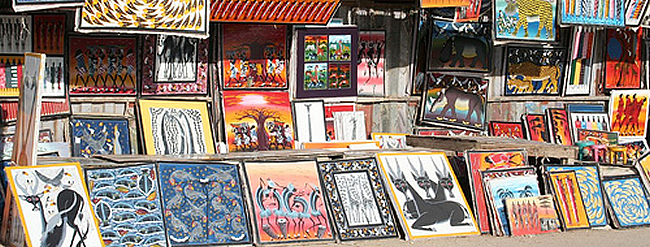Tanzania Where to Go and What to Do

Tanzania has three principal regions of travel interest. The coast, the interior safari destinations, and two of AfricaÂs principal mountaineering challenges. This is arguably the most gifted nation on the entire African travel circuit. It has experienced no civil war or internal upheaval, enjoys a stable democratic administration and a tourist industry that is safe and well organized.
Safari
The two main safari destinations in Tanzania are arguably the Ngorongoro Crater Conservation Area and Serengeti National Park. These are both among the worldÂs A-list nature and wildlife conservancies, and certainly among the premier wildlife destinations in Africa.
Besides these there is the iconic Selous Game Reserve in the south of the country, one of the least visited wildlife destinations in Africa, and definitely one of the most rewarding. Notable features of the 21 000 sq. mile Selous reserve are the guided foot safaris that are permitted nowhere else, and the fact that endangered African wild dogs are still present in reasonable numbers.
Situated in the far northwest of Tanzania, along the north shore of Lake Tanganyika, is the Gombe Stream National Park, an area made famous by British primatologist Jane Goodall, and the home to 150 chimpanzees.
Other notable wildlife destinations include the remote Katavi National Park, third largest in Tanzania, and the most untrammeled by mass tourism. Situated in the inaccessible southwest it is for the intrepid traveler only. Another of the purist wildlife travelers destinations is Ruaha National Park situated in the south/central region, and likewise a region of untrammeled beauty, accessible only to venturesome travelers.
Lake Manyara, Tarangire and Arusha National Parks are notable among the smaller, more popular destinations.
Visit Wilds of Africa Tours & Travel for African safaris to the Serengeti, Ngorongoro, Kilimanjaro and Zanzibar.
Mountain
Tanzania is home to Kilimanjaro, and most mountaineers tend to look no further than this, but the country also boasts Mount Meru, a sizable peak in its own right, and the Udzungwa Mountains National Park, where the fabulous tropical biodiversity of central African highland is carefully preserved and showcased for the purist nature enthusiast.
Coast
Among TanzaniaÂs iconic destinations is Zanzibar Island, one of the most recognizable names in African travel, and one of AfricaÂs most popular cultural destinations. Forming part of the same archipelago are also Pemba and Mafia Islands, the latter being one of the principal east Africa dive destinations.
All three islands conform to the tropical idyll of white sands and palm fringed, azure seas, with lavish servings of Arabesque east African coastal culture. Zanzibar is obviously the most developed of the three, and the most accessible, but for venturesome travelers, committed beach junkies and island hoppers all three are richly rewarding travel destinations.
The mainland coast is no less appealing. Modern and ancient remnants of millennia of Indian Ocean trade has stamped the region with the mark of Islamic, African and Indian cultures, each acculturated somewhat with the other, forming a synthesis of all three in what is the unique Swahili society and culture of the region. The major towns and cities of Dar es Salaam and Bagamoyo, Kilwa, Lindi and Mtwara all to some degree illustrate this, while at the same time retaining the quintessence of Africa that is Tanzania.
Towns & Cities
Dar es Salaam is the principal commercial capital of Tanzania. It is not a popular destination unto itself, but if you happen to be in the city for a few days between flights or excursions there is plenty to see. It is a city with a long history which is linked into the Sultanate of Oman that occupied Zanzibar and governed the east Africa coast from the late 17th century until the European colonial period. Check out the Zoological Gardens, the National Museum, the Village Museum and the many resorts and beaches associated with the city. Try the Kariakoo Market for curious, cloth, souvenirs and the colorful local Tinga Tinga style of art.
Dar es Salaam is a great place for Indian food with an east African flavor. There are many good Indian restaurants throughout the city. Besides these the city is full of bars and restaurants and a range of hotels, resorts, lodges and hostels.
Dar es Salaam is a noisy, aggressive, colorful and vibrant African city. It can be a little edgy, and has a tourist towns tendency to street crime and scamming, but otherwise it is well worth a visit.
Arusha, known as A town to the locals, is a pretty grubby tourist town with very little going for it other than its proximity to the main tourist destinations of Tanzania. It is a buzzing commercial center, and a lot goes on, but it has very limited aesthetic appeal and there is no particular reason to linger.
Dodoma is something of a manufactured city, and is the official capital of Tanzania. There is little to do and less to see, so really there is no reason other than necessity to go there.
The small towns of Tanzania are usually roadside clusters of informal industry and trade, with a few grubby buildings attached, and occasional side streets. Collectively they add character to a road journey through Tanzania, but individually they have little to offer.